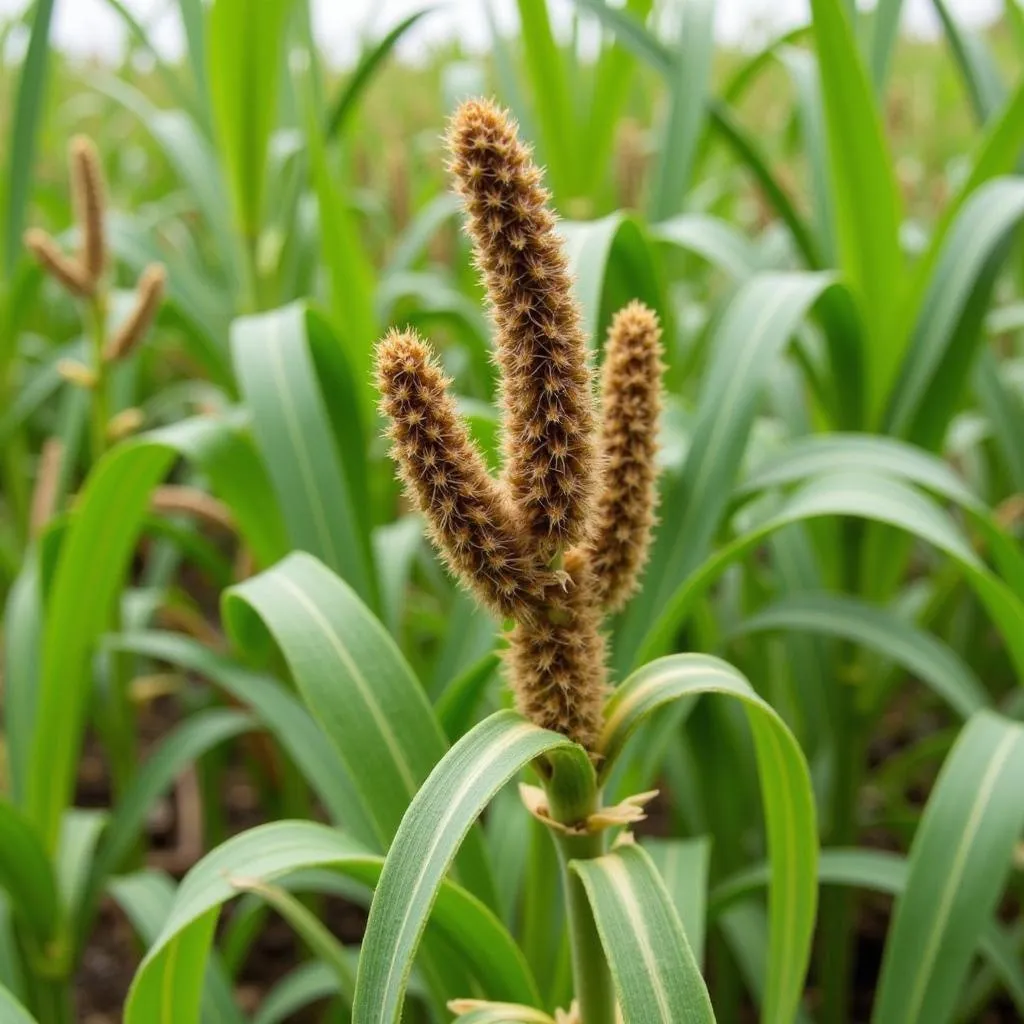A Handbook of West African Weeds: A Guide to Identification and Control
West Africa is a region rich in biodiversity, with a wide variety of plant life. However, not all of this plant life is beneficial. Weeds are plants that grow in unwanted places, competing with crops for resources and often causing damage to agricultural fields. This article will serve as a handbook to help you identify and control some of the most common West African weeds.
What are West African weeds?
Weeds in West Africa are diverse and can be found in a variety of habitats, including farmland, gardens, roadsides, and even forests. They can be classified into different categories, such as:
- Annual Weeds: These weeds complete their life cycle within a year. They are often easier to control than perennial weeds, but they can still cause significant damage.
- Perennial Weeds: These weeds live for more than two years and have a deep root system that can make them difficult to eradicate.
- Grasses: Several types of grasses can become problematic weeds in West African agriculture. They often spread rapidly and can quickly dominate an area.
- Broadleaf Weeds: These weeds have wide, flat leaves and can be found in a wide range of habitats. Some of the most common broadleaf weeds in West Africa include Cassia tora and Parthenium hysterophorus.
Why are West African weeds a concern?
Weeds are a major concern for farmers and gardeners in West Africa. They can:
- Reduce Crop Yield: Weeds compete with crops for sunlight, water, and nutrients. This can lead to significant reductions in crop yields, affecting food security and farmer incomes.
- Increase Production Costs: Managing weeds often requires the use of herbicides, which can be expensive.
- Spread Diseases: Some weeds can host pests and diseases that can spread to crops, further impacting yields and profitability.
- Reduce Land Value: Heavy weed infestation can make land less attractive for farming and lower its overall value.
Common West African Weeds: Identification and Control
Below is a guide to some of the most common weeds found in West Africa, including their identification characteristics and effective control methods.
1. Striga (Witchweed)
 Striga Hermonthica (Witchweed)
Striga Hermonthica (Witchweed)
- Identification: This is a small, slender plant with bright red flowers. It is parasitic, meaning it attaches itself to the roots of other plants to get its nutrients.
- Control:
- Cultural Control: Rotation with non-host crops, early planting, and proper tillage can help to reduce Striga infestations.
- Biological Control: Some natural enemies, such as insects and fungi, can help to suppress Striga populations.
- Chemical Control: Herbicides are available to control Striga, but they should be used with caution as they can affect other crops.
2. Parthenium hysterophorus (Congress Grass)
 Parthenium hysterophorus (Congress Grass)
Parthenium hysterophorus (Congress Grass)
- Identification: This weed has a characteristic strong odor and is easily recognizable by its toothed leaves and small, white flowers.
- Control:
- Manual Control: Hand-pulling or mowing can be effective for small infestations.
- Chemical Control: Herbicides are available to control Congress Grass.
- Biological Control: Some insects and fungi have been shown to be effective in controlling Congress Grass populations.
3. Cassia tora (Sicklepod)
 Cassia Tora (Sicklepod)
Cassia Tora (Sicklepod)
- Identification: This weed is easily recognizable by its trifoliate leaves, yellow flowers, and seed pods that resemble sickles.
- Control:
- Cultural Control: Early planting, crop rotation, and proper tillage can help to prevent the spread of Sicklepod.
- Chemical Control: Herbicides are available to control Sicklepod.
4. Eleusine indica (Goosegrass)
- Identification: Goosegrass is a common grass weed that has a creeping growth habit. It has slender leaves and produces small, brown seed heads.
- Control:
- Cultural Control: Regular mowing, hand-pulling, and proper tillage can help to control Goosegrass.
- Chemical Control: Herbicides are available to control Goosegrass.
5. Cynodon dactylon (Bermuda Grass)
- Identification: Bermuda grass is another common grass weed that has a creeping growth habit and produces long stolons. It has bright green leaves and small seed heads.
- Control:
- Cultural Control: Regular mowing, hand-pulling, and proper tillage can help to control Bermuda Grass.
- Chemical Control: Herbicides are available to control Bermuda Grass.
Expert Insight
Dr. Abena Agyeman, an Agricultural Scientist at the University of Ghana, says:
“It is important to note that every weed has a unique life cycle and requires a specific set of control measures. It is vital for farmers to be able to identify the weeds they are dealing with and select the most appropriate control methods. Applying a combination of methods, including cultural, biological, and chemical control, can be more effective in managing weed infestations.”
Integrated Weed Management: A Holistic Approach
The best way to control weeds is to use an integrated approach that combines different strategies. This includes:
- Cultural Control: This involves practices like crop rotation, proper tillage, and early planting, which can reduce the spread and impact of weeds.
- Biological Control: This involves using natural enemies, such as insects and fungi, to suppress weed populations.
- Chemical Control: This involves using herbicides to kill weeds. Herbicides should be used with caution, following all label instructions and considering their impact on the environment.
FAQ
Q: What are some ways to prevent weeds in my garden?
A: To prevent weeds in your garden, you can:
- Prepare the soil: Thoroughly remove any existing weeds before planting.
- Mulch: Mulch can help to suppress weed growth and retain moisture.
- Use barrier methods: Using landscape fabric or plastic sheeting can prevent weeds from growing.
- Choose the right crops: Planting crops that grow quickly and form a dense canopy can help to crowd out weeds.
Q: What are some natural ways to control weeds?
A: Natural weed control methods include:
- Hand-pulling: This is an effective way to control weeds, especially in small areas.
- Mowing: Regular mowing can help to prevent weeds from going to seed.
- Mulch: Mulch can help to suppress weed growth and retain moisture.
- Using natural herbicides: Some plants, like garlic and onions, can suppress weed growth.
Q: Are all weeds harmful?
A: No, not all weeds are harmful. Some weeds have beneficial uses, such as:
- Medicinal plants: Some weeds have been used for medicinal purposes for centuries.
- Food sources: Some weeds are edible and can be used as food sources.
- Habitat for wildlife: Some weeds provide habitat for wildlife.
Conclusion
Weeds are an unavoidable part of agriculture in West Africa. It is crucial for farmers and gardeners to have a thorough understanding of the most common weeds and how to effectively control them. This handbook has provided a comprehensive guide to the identification and control of some of the most problematic weeds in the region. Remember, a combination of cultural, biological, and chemical control methods is often the most effective approach to achieving sustainable weed management and maximizing crop yields.

